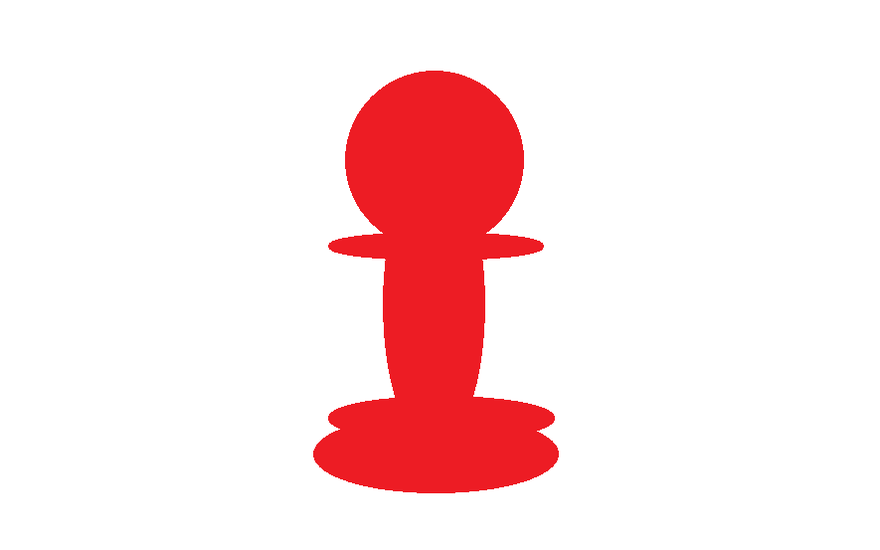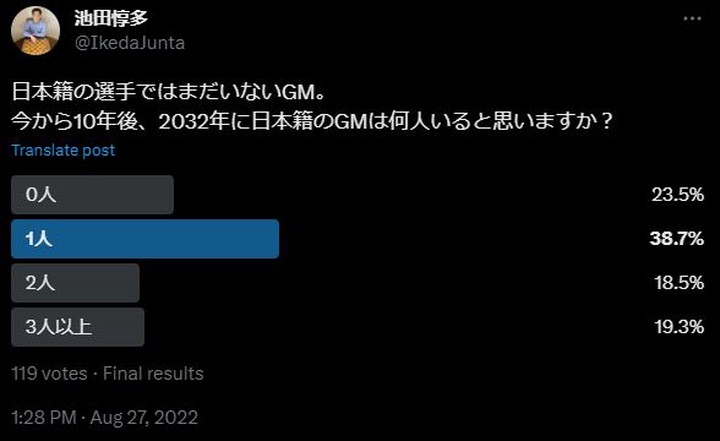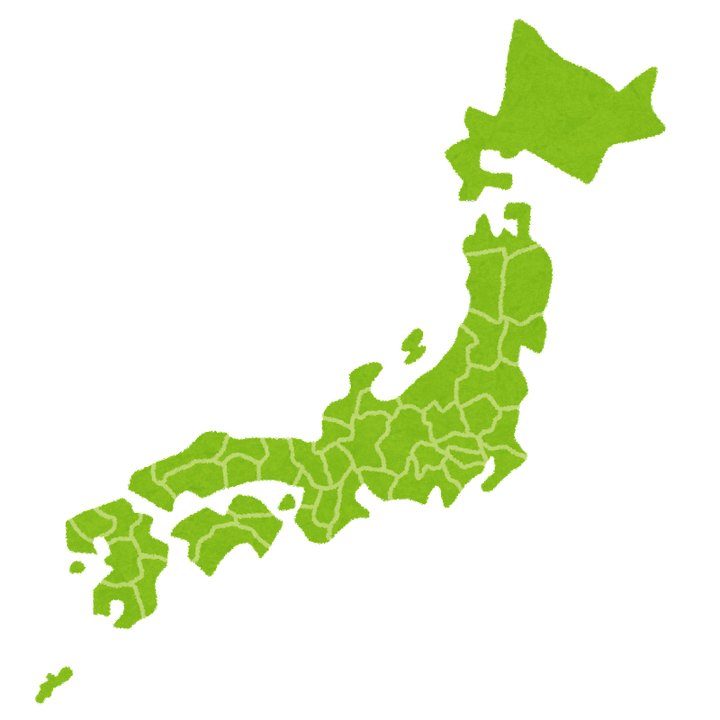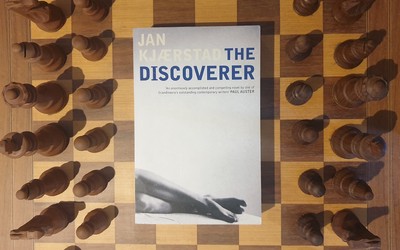
#28: Why isn't chess popular in Japan?
Overview of the past, present and future of the game in the Land of the Rising SunShōgi and Go
A big reason chess isn’t so popular in Japan is the existence of two games which are far more popular: Shōgi, also called Japanese chess, and Go. They’ve been a part of Japanese culture for centuries, and have enthusiasts around Japan in the millions.
- While the ancient Indian game, chaturanga, is believed to have developed into chess in Europe and other games elsewhere, it became shōgi in Japan. Think crazyhouse on a 9x9 board where the pieces are not as mobile as in chess but most of them can promote! If you love tactical play, you might find it more fun than chess. The earliest forms of the game seem to date back to a little less than 1,000 years ago, and the modern form took shape around the 15th–16th centuries.
The top shōgi pros are household names, and the game’s been going through a surge in popularity due to an unprecedently strong, dominant player. - Go is believed to have been invented over 2,500 years ago in China. Unlike chess or shōgi, where the aim is to checkmate the opponent’s king, the aim in Go is to surround more territory than the opponent, with one player using white stones and the other black. Go also has a much higher game complexity compared to the other two games, and I have a feeling I’ll take it up one day. This year, I was fascinated to read the news of a 96-year old female pro beating a 50-year old male pro...which wasn’t the record for a win by the oldest player on the circuit. That record belongs to her late husband! It’s hard to imagine that kind of longevity in chess or shōgi—is it Go’s positional nature? If you’ve never seen or heard about Go, I recommend the documentary on AlphaGo (2017), a man vs. machine epic.

From an early age, Japanese people are far more likely to be exposed to these two games rather than chess, whether it be learning the game or through the media.
Chess in Japan
While there are few credible sources on the history of chess in Japan, it seems plausible that more chess books, documents and enthusiasts would have appeared in the country in its period of Westernisation in the Meiji era (1868–1912), called bunmei-kaika (‘civilisation and enlightenment’). It’s worth noting that Alekhine, then World Champion, visited Japan in January 1933 to learn more about shōgi, and gave a simul. For interested readers, I urge you to read Edward Winter’s magnificent article here. You can get a glimpse of how ‘Western chess’ was perceived in the country then.
Another reliable source is the book Cultural History: Chess (my translations) by the late Kōichi Masukawa, the leading Japanese expert on the history of games. In the 2003 book (thanks to Shinpei Uehara who owns a copy of the book and shared some excerpts), he proposed several reasons why chess hasn’t become popular in Japan:
- In shōgi, you can reuse pieces captured from the opponent as your own, and since this adds a layer of complexity compared to chess, chess is seen as ‘simpler’ and not as sophisticated.
- Shōgi has a large base of enthusiasts already, so it’s easy to pass the game on from generation to generation.
- Shōgi is very familiar to the people through TV, newspapers and magazines (note: of course, it’s exploded further now online), and there are many amateur players who can appreciate the play of professionals.
Masukawa also mentioned the lack of financial support for chess in Japan and there not being many places for face-to-face training.
It makes sense that for the vast majority of people in Japan, shōgi is more accessible—and when two games are relatively similar, you’re more likely to take up the one which is better known, so there are more opportunities to play and connect with others.
How strong are Japanese players?
As of September 2023, Japan is ranked 91st out of 184 countries with a top 10 average FIDE rating of 2248. They have
- 3 IMs,
- 9 FMs,
- 9 CMs,
- 1 WIM,
- 2 WFMs and
- 7 WCMs on their lists.

At the top, a few IMs and IM-strength players, but no one has gotten close to GM yet.
Shōgi players playing chess
As Alekhine remarked 90 years ago (see Winter’s article above), shōgi players have great potential to be good at chess. The prime example of this is shōgi legend Yoshiharu Habu who took up chess as a hobby while being the top shōgi player. He had an initial (!) FIDE rating of 2342 in 2001, and occasionally playing in domestic events and taking trips to overseas tournaments during his ultra-busy shōgi schedule, scored 2 IM norms. He reached a PB of 2415 in 2014 after only 100 or so FIDE-rated games—his wins against GMs Wells and Nikolic are masterpieces of dynamic play (shōgi magic?). I have no doubt he would have at least made the GM title and 2500 if he had more time for chess. A couple of other shōgi pros have also surpassed 2300.
I experienced first-hand the strength of shōgi players when I visited Japan last year—I played blitz in Tokyo as well as in Kyoto, and I lost a game in each city—to a shōgi pro in one, and in the other, a young shōgi player who took up chess...several months ago. There have been some prominent chessplayers who took up shōgi and/or Go, and it’s fascinating to think about how competency in one game links to potential in another.
The future of chess in Japan
From 2003, when Masukawa’s book was published, there have been two big changes:
- The exponential growth in online chess platforms and resources, from the big websites like Lichess and Chess.com to others for learning and entertainment through videos and streaming etc.—the playing field is more level, to the benefit of those in countries where chess isn’t as traditionally popular
- The Japan Chess Association, which operated from 1968 to 2019, was notthe most popular organisation. Since 2019, the newly founded National Chess Society of Japan, now the Japan Chess Federation, has been doing an amazing job of promoting chess and growing the game in the country—active on social media and, importantly, transparent in its operations and management.
The Federation has over 600 annual members as at July 2023, and the increase in participation over the last years has been plain to see. As an Australian, which, in competitive terms, comes with some geographical difficulties, I nevertheless had the opportunity to play regularly growing up—nearly 140 classical games in a year when I was 12, for example—and being able to play so often at clubs and weekenders no doubt helped accelerate my chess development. Even with all of the online resources now,nothing beats learning from playing over the board, so it’s been heart-warming to see the gradual yet real strides chess in Japan is making so people can play more tournaments, find more chess clubs near them and nurture their love for the game.
The JCF also has nearly 2,700 subscribers on its YouTube channel at present. They have commentary on a few live boards on-stream for the bigger tournaments, and even cameras on the players! For paid members to the channel, they can take part in a weekly lecture given by masters and other strong players. I often do commentary on the big tournaments in Japan, and give monthly lectures on their channel. It’s clear the not-yet-5-years-old Japan Chess Federation is punching above its weight.
As for grandmasters, Japan doesn’t have one yet—and this is only one of many factors which help paint a picture of how chess is in one country—but from what I’ve seen over the last few years, I have high hopes for the future of chess in Japan.
A poll from one year ago: "How many GMs do you think Japan will have in 2032?"
Want to play chess in Japan?
If you’re interested in playing tournaments in Japan, they have several FIDE-rated tournaments throughout the year, with one remaining for 2023—the Japan Open in November. I believe its limit of 80 players is filling up fast, so get on it quickly!
I’ve heard there’ll be a tournament next year, perhaps in November, in a beautiful location in Kyoto—I’m quite tempted by that one.
If you'd like to receive posts like this in your inbox, you can subscribe to my free newsletter at https://juntaikeda.substack.com/, now read by 850 people.



